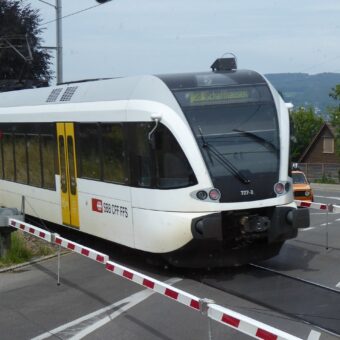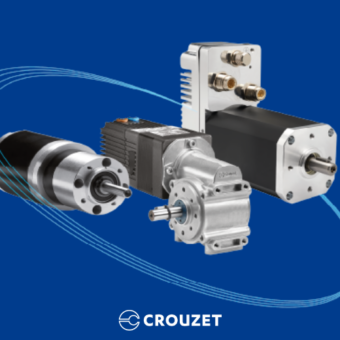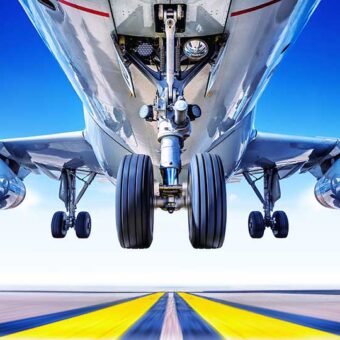In today’s industrial landscape, operational efficiency is more crucial than ever. Companies are constantly seeking ways to optimize their processes to reduce costs, improve productivity, and ensure safety. This is where MRO (Maintenance, Repair, and Operations) comes into play. Often overlooked but essential, MRO plays a vital role in the smooth operation of industrial facilities and strategic sectors such as aeronautics. At Crouzet, we understand the unique challenges associated with managing MRO and offer innovative solutions to help businesses overcome these obstacles. In this article, we will explore what MRO is, the challenges it presents, and how Crouzet can help you transform your maintenance operations for a more efficient and sustainable future.
What is MRO?
MRO, or “Maintenance, Repair, and Operations,” refers to all activities and processes related to the maintenance, repair, and operation of equipment and facilities in an industrial or commercial environment. Here is a more detailed explanation:
- Maintenance: This involves regular activities aimed at preventing failures and ensuring the proper functioning of equipment. It includes inspections, lubrication, replacement of worn parts, etc.
- Repair: When a failure or malfunction occurs, repair activities aim to restore the equipment to working order. This can include diagnosing problems, replacing defective components, etc.
- Operations: This aspect covers all activities necessary for the daily operation of facilities, including managing spare parts inventory, scheduling maintenance interventions, and managing suppliers.
The Importance of MRO
MRO (Maintenance, Repair, and Operations) is crucial for several reasons related to operational efficiency, profitability, and the safety of businesses. Here are some key points that highlight its importance:
- Cost Reduction:
- Effective MRO management helps minimize costs associated with unexpected downtime and emergency repairs.
- By proactively planning maintenance, companies can avoid significant expenses on major repairs.
- Improved Productivity:
- Well-maintained equipment operates more reliably, reducing downtime and increasing overall productivity.
- Preventive maintenance keeps equipment in good working order, optimizing production processes.
- Workplace Safety:
- Regular maintenance helps prevent accidents and ensures a safe working environment for employees.
- Equipment in good condition reduces the risk of incidents, protecting workers’ health and safety.
- Extended Equipment Lifespan:
- Proper maintenance extends the lifespan of equipment, delaying the need for costly replacements.
- This also contributes to more sustainable resource use.
- Regulatory Compliance:
- Many industries are subject to strict safety and maintenance regulations.
- A good MRO program helps companies comply with these legal requirements.
- Customer Satisfaction:
- For businesses providing services or products, effective maintenance ensures that delivery times and quality are met, increasing customer satisfaction.
- Innovation and Competitiveness:
- By integrating advanced technologies like IoT and AI into MRO processes, companies can improve efficiency and stay competitive in the market.
In summary, MRO is an essential pillar for ensuring the smooth operation and sustainability of industrial operations. It not only helps reduce costs and improve productivity but also ensures safety and regulatory compliance.
What are the Challenges of MRO?
Managing MRO (Maintenance, Repair, and Operations) presents several challenges that can impact the efficiency and profitability of industrial operations. Inventory management is often problematic, as overstocking can lead to unnecessary costs, while a lack of spare parts can cause production stoppages. Hidden costs, such as overtime and emergency shipments, can also accumulate quickly. Logistical complexity, particularly coordination between suppliers and maintenance teams, adds a layer of difficulty, especially in large facilities.
A lack of visibility into maintenance needs and available inventory complicates informed decision-making. Maintenance teams need to be regularly trained on new technologies to ensure effective maintenance, but integrating these technologies can be costly and require specialized skills. Companies must also comply with various safety and maintenance regulations, which can be complex and expensive.
Precise scheduling of maintenance interventions is another major challenge, especially in dynamic environments where unforeseen events can disrupt timelines. Additionally, companies must consider the environmental impact of their maintenance operations, adding a sustainability dimension to these challenges. Overcoming these obstacles requires a proactive approach and the use of advanced technologies to optimize MRO processes, enabling significant cost savings and improved competitiveness.
Optimizing MRO
Optimizing MRO is essential for improving operational efficiency and reducing costs. Here are some key strategies to achieve this:
- Adopt Advanced Technologies: Integrating technologies such as the Internet of Things (IoT), artificial intelligence (AI), and computerized maintenance management software (CMMS) enables real-time monitoring of equipment status and predictive maintenance needs. These tools can automate maintenance scheduling and improve decision-making.
- Implement Preventive Maintenance: Rather than waiting for equipment to fail, preventive maintenance involves regular inspections and repairs to avoid breakdowns. This can include lubrication, replacing worn parts, and regular safety checks.
- Optimize Inventory Management: Effective management of spare parts inventory is crucial. It involves finding a balance between overstocking, which ties up capital, and understocking, which can lead to production stoppages. Inventory management systems can help maintain optimal levels based on historical needs and forecasts.
- Continuously Train Teams: Maintenance teams need to be trained on new technologies and best practices to ensure effective maintenance. Continuous training helps maintain a high level of skill and reduces errors.
- Improve Planning and Forecasting: Using historical data and predictive analytics to schedule maintenance interventions helps minimize disruptions and optimize resource use. Planning tools can help coordinate teams and manage maintenance schedules.
- Implement Performance Indicators: Tracking key performance indicators (KPIs) allows for measuring the efficiency of maintenance operations and identifying areas for improvement. This can include metrics such as mean time between failures (MTBF) and mean time to repair (MTTR).
- Collaborate with Suppliers: Establishing strong partnerships with parts and service suppliers can improve the availability of spare parts and reduce lead times. Maintenance contracts with suppliers can also offer economies of scale.
- Promote a Culture of Continuous Improvement: Encouraging a culture that values continuous improvement can lead to innovations and efficiency gains. This can include initiatives such as quality circles and internal audits.
By implementing these strategies, companies can optimize their MRO operations, reduce costs, improve productivity, and ensure the safety and reliability of their equipment.
Relying on Crouzet for MRO
Crouzet offers several solutions tailored to the needs of maintenance, repair, and operations (MRO), particularly in the rail, industrial, and aerospace sectors. Our repair station team provides comprehensive repair, overhaul, and refurbishment services throughout the lifecycle of your program.
Crouzet provides sensor bonding services to OEMs and manufacturers to measure structural forces and stresses on parts (propellers, actuators), aircraft, or vehicles. Tens or even thousands of sensors are bonded to the aircraft or vehicle during testing to measure deformation or temperature and ensure the integrity and reliability of the structure.
Discover more
All news
AC or DC Driver? Which Choice for Automatic Barriers?
In the field of railway safety, automatic barriers at level crossings play a crucial role in…

AC vs DC Motors: Understanding the Differences to Choose the Right Motor
In the world of electromechanics, electric motors play a crucial role in converting electrical energy into…

RCC-E 2012 and Crouzet limit switches
In the nuclear sector, the reliability of electrical equipment is a crucial issue. Every component used…

Weight on wheels proximity switches
Weight on wheels (WoW) switches indicate whether the weight of an aircraft is resting on its…